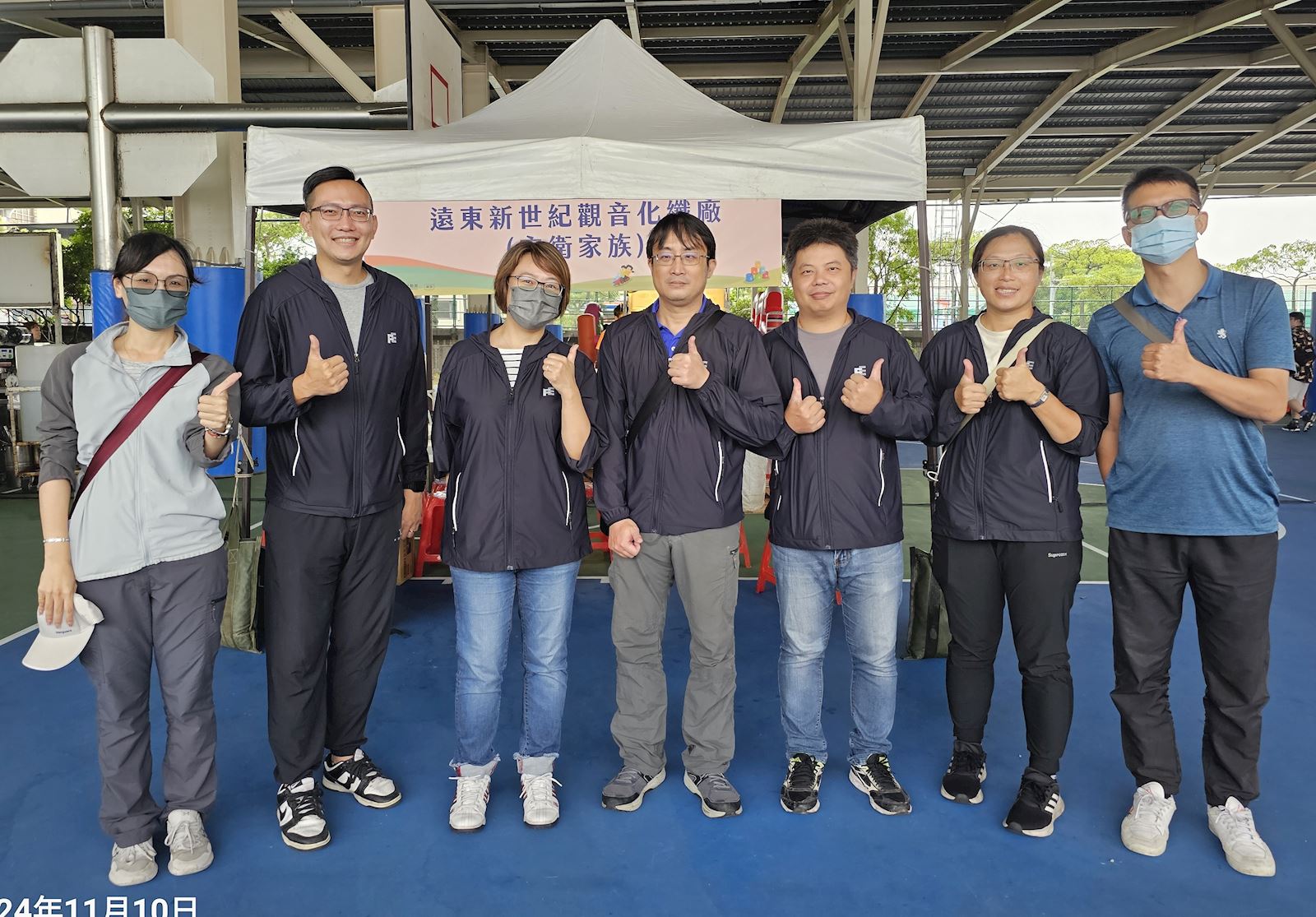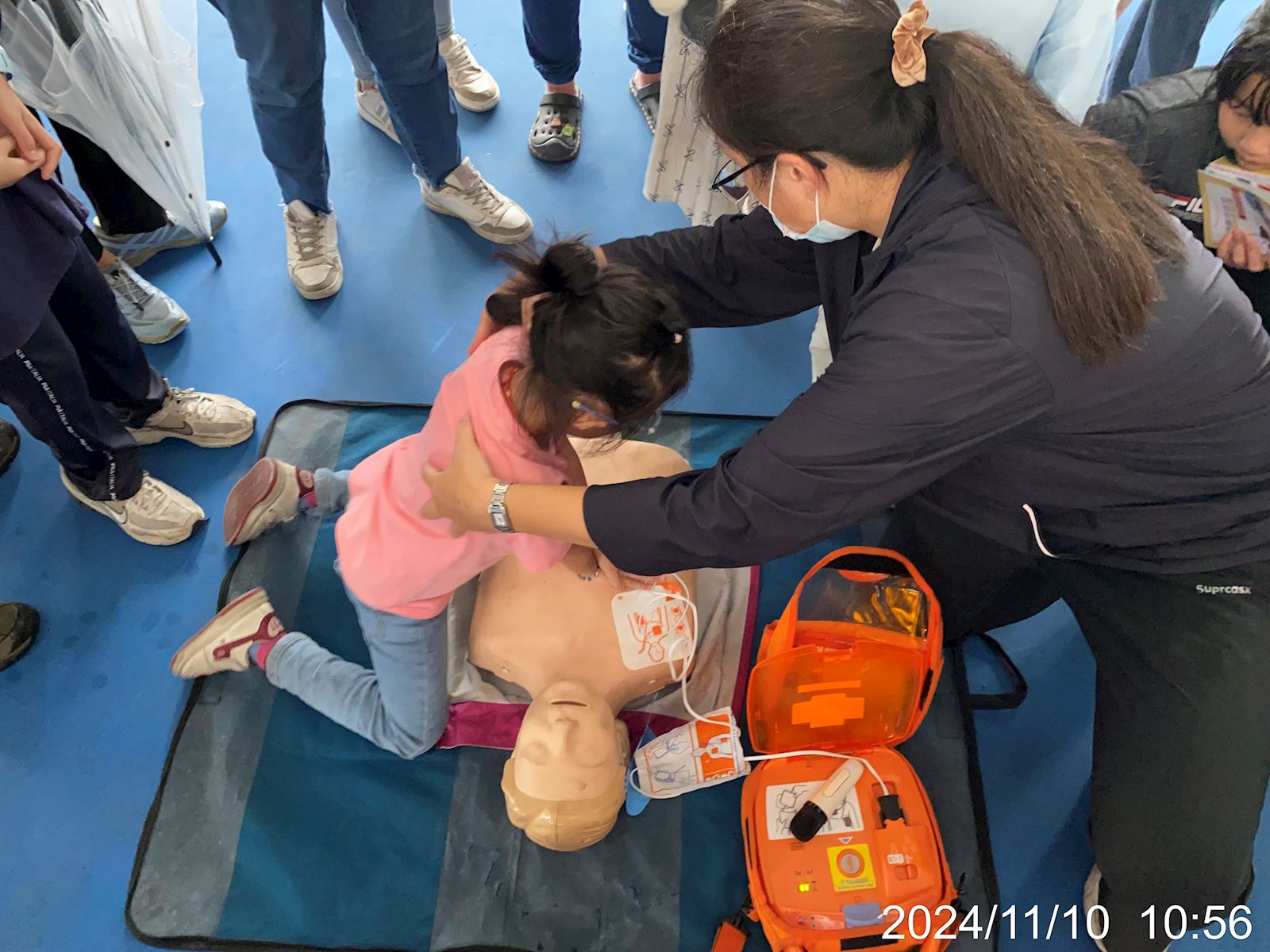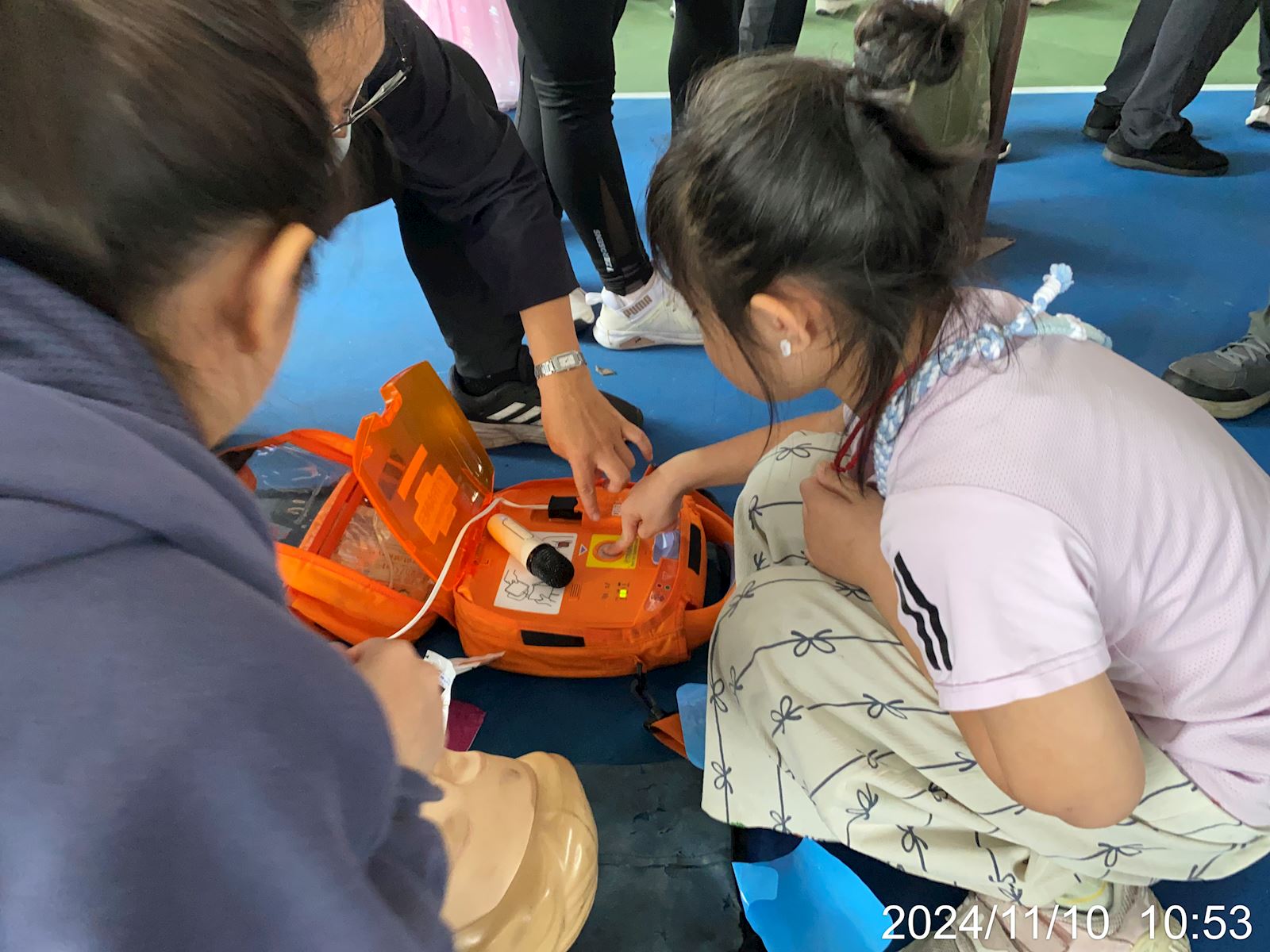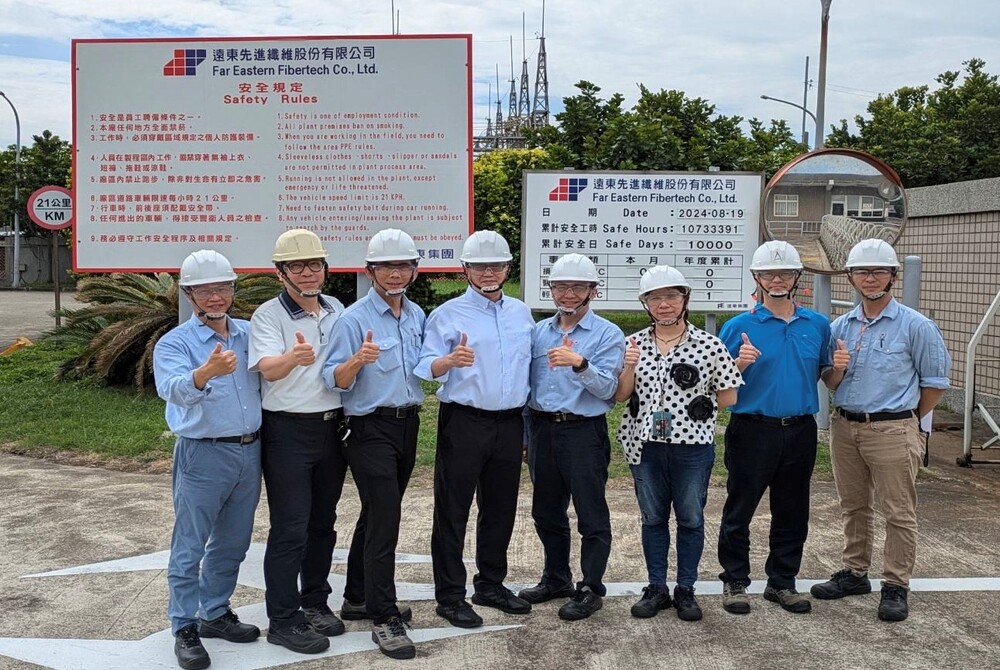Occupational Safety and Health
Occupational Injuries
At FENC, the end game for occupational safety and health is “zero occupational disasters”. The Company values the safety and health of each and every employee and protects them by raising their awareness and understanding through conducting risk assessment and identification; preparing promotional campaigns and public notice; holding pre-work and toolbox meetings; designating safety and health month with programs and activities. In the unfortunate event of occupational disasters, immediate actions are taken to address the emergency. The following procedures are applicable to all production sites:
.png)
All improvements must be completed within 2 months. Facility improvements that require construction contracts shall be completed within 3 to 6 months. Based on the statistics, a total of 27 cases of occupational injuries among employees occurred at FENC production sites in 2024, which is down significantly by 39% from 2023. Among the occupational injuries are 10 cases of “caught-in / between” and 10 cases of others(slips) which account for the highest percentage, and the major cause is a lack of hazard awareness among workers. In response, FENC has completed the investigation over the occupational incidents at its production sites and the improvement measures as listed have been implemented.
- Construction control (hardware improvement)
• The protective guards, such as mesh guards and guardrails, for rotating and moving components must be thoroughly examined to ensure compliance with safety regulations.
• Photoelectric sensors or interlocking devices are installed in danger zones to automatically stop the machine operation when workers approach within a close distance. - Operating procedures and management measures
• Lockout and tagout: Prior to any repair, adjustment or cleaning operation, the power source of the equipment must be shut off and locked to keep the equipment from being switched on accidentally.
• Risk assessment and zoned management: Danger zones are labeled with demarcations such as the red warning tape with access restricted to authorized personnel only. For highly hazardous operations, the two-person rule is implemented. - Automation and technology upgrade
• Smart visual recognition is incorporated to monitor equipment and automatically send warnings or messages when irregularities occur.
• Manual labor is replaced by robotic arms for high-risk operations, such as material feeding or handling. - Personnel training and behavior-based management
• Strengthening safety education: Safety training for machine operation is conducted on a regular basis, including emergency drills and case analysis. New employees must pass operational assessments before they can proceed independently.
• Standardizing PPE: Loose-fitting clothing and items such as long necklaces are prohibited. Work clothing with a proper fit and non-slip shoes are provided, and cut-resistant gloves are prepared under certain circumstances provided that the gloves do not pose the risk of being caught in / betwen the machine.
On February 6, 2025, a gas explosion occurred at Hsinpu Chemical Fiber Plant, causing the unfortunate death of two employees, and 19 employees were hospitalized. As of May 14, 2025, one employee remained in the hospital for treatment, and 18 had returned home. After the accident, FENC provided full support for the family of the deceased employees, including assistance with the funeral arrangement, generous pensions and the care needed for the children. The injured employees also received comprehensive care and treatment. The Company provided post-traumatic mental support and care programs for those who have been impacted by the accident.
FENC recruited the assistance of experts from Taiwan and abroad to investigate the the root cause. A thorough review was conducted and comprehensive improvement plans were developed to address any potential risks that could cause similar accidents. It is FENC’s dire responsibility to ensure safety and health management, and a deep sorrow was felt across FENC after the tragedy. The Company is determined to address the root cause and make all improvements that will enhance the safety management system. Employees are closely monitored to ensure compliance, and to keep such a tragic event from ever happening again.
Statistics on Occupational Injury in 2024
.png)
Calculation Formulas and Definitions of Indicators Related to Occupational Injury Statistics
Indicator | Formulas and Definitions | Explanation |
Occupational Injuries | Including premature fatalities, permanent total and partial disabilities, temporary total disabilities and that result in no more than one lost day. Minor injuries and traffic accidents that occur during employees’ commute to and from work are excluded. | The classification corresponds to Process Safety Incidents Count (PSIC) in the SASB standards for the chemical industry. |
Severe Occupational Injuries | Defined as an inability or difficulty to restore to pre-injury health condition within 6 months. | It corresponds to Process Safety Incident Severity Rate (PSISR) as per the SASB standards for the chemical industry. |
Injury Rate (IR) | Total number of occupational injuries × 200,000 | IR indicates the percentage of every 100 workers with 40 work hours a week, 50 weeks a year. It corresponds to Total Recordable Incident Rate (TRIR) and Process Safety Total Incident Rate (PSTIR) in the SASB standards for the chemical industry. |
Lost Time Injury Frequency Rate (LTIFR) | Total number of occupational injuries ÷ total work hours × 1000,000 | LTIFR indicates the number of lost time injuries occurring in a workplace per 1 million hours worked. |
Absentee Rate (AR) (%) | Days of absence ÷ total work days × 100% | - |
Lost Day Rate (LDR) | Lost days ÷ total work hours × 200,000. Lost days do not include the day of injury and the day of work resumption. | LDR indicates the percentage of every 100 workers with 40 work hours a week, 50 weeks a year. It corresponds to Lost Workday Rate (LWR) in Dow Jones Sustainability Index (DJSI). |
Rate of Work-Related Fatalities | Number of work-related fatalities ÷ total work hours × 200,000 | Rate of Work-Related Fatalities indicates the percentage of every 100 workers with 40 work hours a week, 50 weeks a year. It corresponds to fatality rate in the SASB standards for the chemical industry. |
Statistics on Occupational Injury
Business | Petrochemical | Polyester | Textile | ||||||||||
|
| 2021 | 2022 | 2023 | 2024 | 2021 | 2022 | 2023 | 2024 | 2021 | 2022 | 2023 | 2024 |
Occupational Injury Cases | Male | 2 | 0 | 1 | 0 | 37 | 22 | 11 | 12 | 29 | 38 | 20 | 5 |
Female | 0 | 0 | 0 | 0 | 10 | 2 | 2 | 0 | 20 | 15 | 10 | 10 | |
Total | 2 | 0 | 1 | 0 | 47 | 24 | 13 | 12 | 49 | 53 | 30 | 15 | |
Injury Rate (IR) | Male | 0.34 | 0.00 | 0.22 | 0.00 | 0.34 | 0.36 | 0.19 | 0.20 | 0.20 | 0.21 | 0.14 | 0.03 |
Female | 0.00 | 0.00 | 0.00 | 0.00 | 0.09 | 0.03 | 0.03 | 0.00 | 0.14 | 0.08 | 0.07 | 0.06 | |
Total | 0.34 | 0.00 | 0.22 | 0.00 | 0.43 | 0.39 | 0.22 | 0.20 | 0.33 | 0.29 | 0.20 | 0.10 | |
Lost Time Injury Frequency Rate (LTIFR) | Male | 1.69 | 0.00 | 1.12 | 0.00 | 1.71 | 1.78 | 0.94 | 1.00 | 0.98 | 1.03 | 0.68 | 0.16 |
Female | 0.00 | 0.00 | 0.00 | 0.00 | 0.46 | 0.16 | 0.17 | 0.00 | 0.68 | 0.41 | 0.34 | 0.32 | |
Total | 1.69 | 0.00 | 1.12 | 0.00 | 2.17 | 1.94 | 1.11 | 1.00 | 1.66 | 1.44 | 1.02 | 0.48 | |
Absentee Rate (AR) (%) | Male | 0.37 | 0.90 | 0.14 | 0.38 | 0.09 | 0.20 | 0.32 | 0.26 | 0.37 | 0.12 | 0.38 | 0.13 |
Female | 0.05 | 0.04 | 0.03 | 0.04 | 0.07 | 0.08 | 0.17 | 0.16 | 0.28 | 0.33 | 0.37 | 0.31 | |
Total | 0.42 | 0.94 | 0.17 | 0.42 | 0.15 | 0.28 | 0.48 | 0.42 | 0.65 | 0.44 | 0.75 | 0.44 | |
Lost Day Rate (LDR) | Male | 0.00 | 0.00 | 2.24 | 0.00 | 2.85 | 4.87 | 4.24 | 2.64 | 2.88 | 2.77 | 0.89 | 1.26 |
Female | 0.00 | 0.00 | 0.00 | 0.00 | 0.94 | 0.92 | 1.44 | 1.00 | 1.72 | 1.49 | 1.82 | 1.11 | |
Total | 0.00 | 0.00 | 2.24 | 0.00 | 3.80 | 5.79 | 5.68 | 3.64 | 4.60 | 4.26 | 2.72 | 2.37 | |
Number of Work-Related Fatalities | Male | 0 | 0 | 0 | 0 | 0 | 0 | 0 | 0 | 0 | 0 | 0 | 0 |
Female | 0 | 0 | 0 | 0 | 0 | 0 | 0 | 0 | 0 | 0 | 0 | 0 | |
Total | 0 | 0 | 0 | 0 | 0 | 0 | 0 | 0 | 0 | 0 | 0 | 0 | |
Rate of Work-Related Fatalities | Male | 0.00 | 0.00 | 0.00 | 0.00 | 0.00 | 0.00 | 0.00 | 0.00 | 0.00 | 0.00 | 0.00 | 0.00 |
Female | 0.00 | 0.00 | 0.00 | 0.00 | 0.00 | 0.00 | 0.00 | 0.00 | 0.00 | 0.00 | 0.00 | 0.00 | |
Total | 0.00 | 0.00 | 0.00 | 0.00 | 0.00 | 0.00 | 0.00 | 0.00 | 0.00 | 0.00 | 0.00 | 0.00 | |
| Business | Corporate Management | Total | ||||||
|
| 2021 | 2022 | 2023 | 2024 | 2021 | 2022 | 2023 | 2024 |
Occupational Injury Cases | Male | 1 | 0 | 0 | 0 | 69 | 60 | 32 | 17 |
Female | 0 | 0 | 0 | 0 | 30 | 17 | 12 | 10 | |
Total | 1 | 0 | 0 | 0 | 99 | 77 | 44 | 27 | |
Injury Rate (IR) | Male | 0.12 | 0.00 | 0.00 | 0.00 | 0.25 | 0.23 | 0.15 | 0.07 |
Female | 0.00 | 0.00 | 0.00 | 0.00 | 0.11 | 0.07 | 0.05 | 0.04 | |
Total | 0.12 | 0.00 | 0.00 | 0.00 | 0.37 | 0.30 | 0.20 | 0.12 | |
Lost Time Injury Frequency Rate (LTIFR) | Male | 0.58 | 0.00 | 0.00 | 0.00 | 1.27 | 1.15 | 0.73 | 0.37 |
Female | 0.00 | 0.00 | 0.00 | 0.00 | 0.55 | 0.33 | 0.27 | 0.22 | |
Total | 0.58 | 0.00 | 0.00 | 0.00 | 1.83 | 1.48 | 1.01 | 0.59 | |
Absentee Rate (AR) (%) | Male | 0.05 | 0.11 | 0.10 | 0.09 | 0.25 | 0.15 | 0.35 | 0.17 |
Female | 0.07 | 0.20 | 0.17 | 0.16 | 0.18 | 0.26 | 0.30 | 0.26 | |
Total | 0.12 | 0.31 | 0.26 | 0.24 | 0.43 | 0.41 | 0.65 | 0.43 | |
Lost Day Rate (LDR) | Male | 0.35 | 0.00 | 0.00 | 0.00 | 2.73 | 3.12 | 1.78 | 1.56 |
Female | 0.00 | 0.00 | 0.00 | 0.00 | 1.31 | 1.28 | 1.61 | 1.03 | |
Total | 0.35 | 0.00 | 0.00 | 0.00 | 4.04 | 4.39 | 3.39 | 2.59 | |
Number of Work-Related Fatalities | Male | 0 | 0 | 0 | 0 | 0 | 0 | 0 | 0 |
Female | 0 | 0 | 0 | 0 | 0 | 0 | 0 | 0 | |
Total | 0 | 0 | 0 | 0 | 0 | 0 | 0 | 0 | |
Rate of Work-Related Fatalities | Male | 0.00 | 0.00 | 0.00 | 0.00 | 0.00 | 0.00 | 0.00 | 0.00 |
Female | 0.00 | 0.00 | 0.00 | 0.00 | 0.00 | 0.00 | 0.00 | 0.00 | |
Total | 0.00 | 0.00 | 0.00 | 0.00 | 0.00 | 0.00 | 0.00 | 0.00 | |
| Note: 1. Statistics cover 100% production sites in this report, including permanent employees and temporary employees. The term, “permanent employee” in this report is identical to the terms, “permanent employee” and “full-time employee” referenced in the GRI standards. The term, “temporary employee” in this report refers to migrant workers in Taiwan; contract or outsourced workers in mainland China; employees under the probation period in Vietnam; outsourced workers in Japan; temporary workers in the U.S.; temporary employees as referenced in the GRI standards. 2. Total work hours of employees are 45,457,432 hours in 2024. 3. There were no high-consequence work-related injuries (defined as an inability or difficulty to restore to preinjury health condition within 6 months) in 2021, 2022 and 2024. However, there were 2 severe occupational injuries related to being caught-in/between and dust combustion in 2023. These incidents correspond to a 0.01% Process Safety Incident Severity Rate (PSISR) as per the SASB standards for the chemical industry. 4. There were no occupational illnesses between 2020 and 2024. 5. Beginning in 2024, disclosures from the Corporate Management have been included in the report, with retrospective adjustments made to data dating back to 2021. |
The 2024 statistics on occupational injuries at FENC production sites have been analyzed and compared by industry with the 2023 occupational disabling injury frequency rate and disabling injury severity rate compiled by the Occupational Safety and Health Administration in Taiwan. Both rates from FENC’s Petrochemical, Polyester and Textile Businesses are lower than those from the industry peers.
Comparison Between FENC and Nationwide Statistics on Occupational Injuries
Petrochemical Industry | Petrochemical Industry | Polyester Industry FR | Polyester Industry | Textile Industry FR | Textile Industry | |
Statistics from Taiwan OSHA | 1.16 | 137 | 1.31 | 23 | 1.77 | 52 |
Statistics from FENC | 0 | 0 | 1.00 | 18 | 0.48 | 12 |
| Note: 1. Disability injury frequency rate (FR) = total number of disabling injuries ×1,000,000 ÷ total manhours worked. 2. Disability injury severity rate (SR) = number of injured days off work × 1,000,000 ÷ total manhours worked. 3. FENC data is compared against the 2023 statistics for the petrochemical, chemical material manufacturing and textile industries from Occupational Safety and Health Administration, Ministry of Labor. |
A total of five occupational incidents involving contractors at FENC’s production and operation sites occurred in 2024, representing a significant drop by 45% from 2023. Among them, four were fall-related incidents at FIGP. To prevent future occurrences, FIGP proposed the following preventive measures:
- Clean the work environment at production areas regularly to prevent hazards caused by wet conditions and dust accumulation on the ground.
- Strictly prohibit running within the plant premise and stress this rule among contractor employees.
- Strengthen the training for contractor employees and include the fall incidents as case studies.
Contractor’s Occupational Injury at Production Sites
Business | Petrochemical | Polyester | |||||||
|
| 2021 | 2022 | 2023 | 2024 | 2021 | 2022 | 2023 | 2024 |
Occupational Injury Cases | Male | 2 | 2 | 4 | 1 | 3 | 6 | 5 | 2 |
Female | 0 | 0 | 0 | 0 | 0 | 1 | 0 | 2 | |
Total | 2 | 2 | 4 | 1 | 3 | 7 | 5 | 4 | |
Injury Rate (IR) | Male | 0.32 | 0.41 | 1.04 | 0.68 | 0.30 | 0.58 | 0.41 | 0.19 |
Female | 0.00 | 0.00 | 0.00 | 0.00 | 0.00 | 0.10 | 0.00 | 0.19 | |
Total | 0.32 | 0.41 | 1.04 | 0.68 | 0.30 | 0.67 | 0.41 | 0.38 | |
Lost Time Injury Frequency Rate (LTIFR) | Male | 1.60 | 2.04 | 5.19 | 3.38 | 1.49 | 2.88 | 2.03 | 0.96 |
Female | 0.00 | 0.00 | 0.00 | 0.00 | 0.00 | 0.48 | 0.00 | 0.96 | |
Total | 1.60 | 2.04 | 5.19 | 3.38 | 1.49 | 3.36 | 2.03 | 1.92 | |
Number of Work-Related | Male | 0 | 0 | 0 | 0 | 0 | 0 | 0 | 0 |
Female | 0 | 0 | 0 | 0 | 0 | 0 | 0 | 0 | |
Total | 0 | 0 | 0 | 0 | 0 | 0 | 0 | 0 | |
Rate of Work-Related Fatalities | Male | 0.00 | 0.00 | 0.00 | 0.00 | 0.00 | 0.00 | 0.00 | 0.00 |
Female | 0.00 | 0.00 | 0.00 | 0.00 | 0.00 | 0.00 | 0.00 | 0.00 | |
Total | 0.00 | 0.00 | 0.00 | 0.00 | 0.00 | 0.00 | 0.00 | 0.00 | |
Business | Textile | Total | |||||||
| 2021 | 2022 | 2023 | 2024 | 2021 | 2022 | 2023 | 2024 | |
Occupational Injury Cases | Male | 0 | 0 | 0 | 0 | 5 | 8 | 9 | 3 |
Female | 0 | 0 | 0 | 0 | 0 | 1 | 0 | 2 | |
Total | 0 | 0 | 0 | 0 | 5 | 9 | 9 | 5 | |
Injury Rate (IR) | Male | 0.00 | 0.00 | 0.00 | 0.00 | 0.26 | 0.45 | 0.49 | 0.19 |
Female | 0.00 | 0.00 | 0.00 | 0.00 | 0.00 | 0.06 | 0.00 | 0.12 | |
Total | 0.00 | 0.00 | 0.00 | 0.00 | 0.26 | 0.50 | 0.49 | 0.31 | |
Lost Time Injury Frequency Rate (LTIFR) | Male | 0.00 | 0.00 | 0.00 | 0.00 | 1.30 | 2.23 | 2.46 | 0.93 |
Female | 0.00 | 0.00 | 0.00 | 0.00 | 0.00 | 0.28 | 0.00 | 0.62 | |
Total | 0.00 | 0.00 | 0.00 | 0.00 | 1.30 | 2.50 | 2.46 | 1.55 | |
Number of Work-Related | Male | 0 | 0 | 0 | 0 | 0 | 0 | 0 | 0 |
Female | 0 | 0 | 0 | 0 | 0 | 0 | 0 | 0 | |
Total | 0 | 0 | 0 | 0 | 0 | 0 | 0 | 0 | |
Rate of Work-Related Fatalities | Male | 0.00 | 0.00 | 0.00 | 0.00 | 0.00 | 0.00 | 0.00 | 0.00 |
Female | 0.00 | 0.00 | 0.00 | 0.00 | 0.00 | 0.00 | 0.00 | 0.00 | |
Total | 0.00 | 0.00 | 0.00 | 0.00 | 0.00 | 0.00 | 0.00 | 0.00 | |
| Note: 1. Statistics cover 100% production sites in this report. 2. Total work hours of contractors are 3,229,312 hours in 2024, including contractors of engineering and labor services. 3. There were no high-consequence work-related injuries (defined as an inability or difficulty to restore to pre-injury health condition within 6 months) in 2021, 2022 and 2024. However, there was 1 severe occupational injury related to being caught-in/between in 2023. This incident corresponds to a 0.05% Process Safety Incident Severity Rate (PSISR) as per the SASB standards for the chemical industry. 4. There were no occupational illnesses between 2020 and 2024. |
Promoting Occupational Safety and Health with Stakeholders
1. Non-Profit Safety and Health Promotion – Kuansin E Family
In 2017, Kuanyin Chemical Fiber Plant joined the Labor Safety and Health Family Registry, a coaching program launched by the Office of Labor Inspection of Taoyuan City Government. It was then the plant established Kuansin E Family and served as the core leader of the program. To scale the program operation and demonstrate its commitment to safety and health management, Kuanyin Chemical Fiber Plant established another safety and health family, “Wei Nin Ping An,” in 2023 as a core leader in the Labor Safety and Health Registry, providing coaching and mentorship for smaller plants to develop workplace safety and health awareness and culture.
Kuansin E Family has been assisting the government with the implementation of occupational safety and health management since its founding. Implementation efforts in 2024 include the following:
- Kuansin E Family held pre-construction meetings, occupational safety and health outreach and briefings regarding labor inspection guidelines. A total of four training sessions were also offered to discuss contractor management, hazard prevention during hazardous operations and case studies on occupational incidents. The sessions drew 106 participants, including plant supervisors, safety and health management personnel, junior staff and members within Kuansin E Family.

- Kuansin E Family demonstrated support for the Office of Labor Inspection of Taoyuan City Government by participating in and co-organizing external occupational safety and health programs. The Office of Labor Inspection launched the Occupational Safety and Health Week in November 2024 and arranged games and competitions for the participants. Kuanyin Chemical Fiber Plant was also invited to set up a charity booth. During the event, the plant guided the participants to perform CPR and operate the automated external defibrillator, helping them learn the proper emergency procedures and understand their importance.


- Kuansin E Family provided strong member support, helping them diagnose occupational safety and health issues and proposing improvement measures. The 31 measures recommended in 2024 have all been completed, representing a 100% improvement rate. Compared with 2023, though the number of recommended improvement measures rose slightly, most employees showed support for these measures, a sign that the implementation of Labor Safety and Health Family Registry has raised the members’ awareness of occupational safety and health. The registry encourages self-management and self-evaluation, which is helping members maintain occupational safety and health while building a safety culture.
Performance of Safety and Health Family Program
.png)
- During the Labor Safety and Health Family Registry Competition held by Taoyuan City Government in 2024, Kuanyin Chemical Fiber Plant was recognized with the Award of Excellence for the remarkable records it had demonstrated since the plant started promoting the registry in 2017.
Award of Excellence–Kuansin E Family by FENC Kuanyin Chemical Fiber Plant (Chinese)












